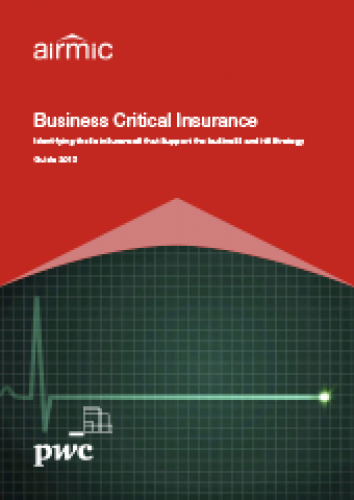Business Critical Insurance
Introduction
The true value of insurance is often only recognised as a consequence of a major loss. At other times, insurance can be viewed by boards and business units as just another cost overhead, where value is judged by securing the lowest premium. Businesses may fail to appreciate the value of insurance in supporting the overall strategy of the organisation and the achievement of its objectives. As a result, insurance can be unfit for purpose and when losses occur, may fail to meet the expectations of the organisation.
The challenge for insurance buyers is raising the awareness of the value of insurance beyond that of a commodity, and articulating how individual insurance covers can contribute to the financial strategy and financial modelling of the organisation. The result would be a more carefully targeted and strategically aligned approach to insurance design and buying that supports the risk appetite of the business and maximises the value of insurance cover, rather than simply minimising the cost.
This paper proposes that individual insurance covers can be classified as follows:
- Optional
- Mandatory
- Business critical.
This paper will describe the three types of cover, set out a framework for categorising individual insurance covers and demonstrate the importance of mapping business-critical insurances against the context of key corporate finance thresholds.
In ‘Efficacy of Business Insurance’ (Airmic, 2014), Airmic detailed the importance of business insurance and the steps organisations can take to ensure insurance acts as an effective risk-financing mechanism. The framework detailed in this paper develops this guidance, placing certain business-critical insurances as key contingent assets where the risk evaluation would centre on what level of loss, reputational damage or business interruption could lead to financial jeopardy or even collapse. This in turn emphasises the need for a greater level of due diligence during procurement.
- Fill out an application Our membership manager will assess your eligibility against our criteria.
- Complete your profileIf you are eligible for membership you will be asked to answer a few questions about yourself.
- PaymentYou can make payment online using a card or request an invoice.

